The year: 1977.
It was ten years after George Lucas had graduated with his BFA and won prizes with the short film Electronic Labyrinth: THX 1138 4EB (later adapted into the full-length THX 1138). Between 1967 and 1977, he’d:
- Been awarded a student scholarship from Warner Bros., which let him work on the making of any film of his choice...in this case, Finian’s Rainbow, directed by Francis Ford Coppola
- Worked as a camera operator on a Rolling Stones concert film
- Co-founded a studio with Coppola, aiming to create a more creatively free space outside of the Hollywood system
- Had a minor role in the filming of The Godfather
- Adapted his award-winning short-film into the full-length THX 1138
- Created his own company (Lucasfilm Ltd...you might have heard of it)
- Directed American Graffiti, which won Best Motion Picture at the 31st Golden Globe Awards (with Lucas being nominated for Best Director and the film and the film earning another ten nominations between the Golden Globes and the Academy Awards)
Seems like a very promising career start, but nothing revolutionary — yet. His game changing journey had only just begun.
Going to Battle Over Star Wars
Lucas might have been relatively new to the industry, but he had a deep understanding of stories and how they captured our attention.
He admired classic films of wildly different genres - from Flash Gordon and Metropolis in sci-fi, samurai films by Akira Kurosawa, to westerns like The Searchers and adventure films like 1938's Robin Hood - elements from these and many others, would help George Lucas lay the groundwork for what would ultimately become Star Wars.
But it wasn't easy. Lucas had already written two drafts of what would become Star Wars when he rediscovered Joseph Campbell’s The Hero With a Thousand Faces.
Re-acquainting himself with Campbell’s Hero’s Journey, Lucas had a new way to give his stories structure — a structure that he knew would work, and would give his characters a home in viewers’ imaginations. (In fact, Lucas later became friends with Campbell and referred to him as his “Yoda.”)
You know, I thought real art had stopped with Picasso, Joyce, and Mann. Now I know it hasn’t.
- Joseph Campbell, after watching the three original Star Wars movies back to back
After fighting himself to get his story right, no studio wanted it.
Movie making conventions at the time, were very premise based; aliens were bad, robots wanted to destroy humanity, princesses were damsels in need of saving, and so on. Lucas on the other hand, proposed a world where aliens could be background characters, and robots could be sidekicks and comic relief.
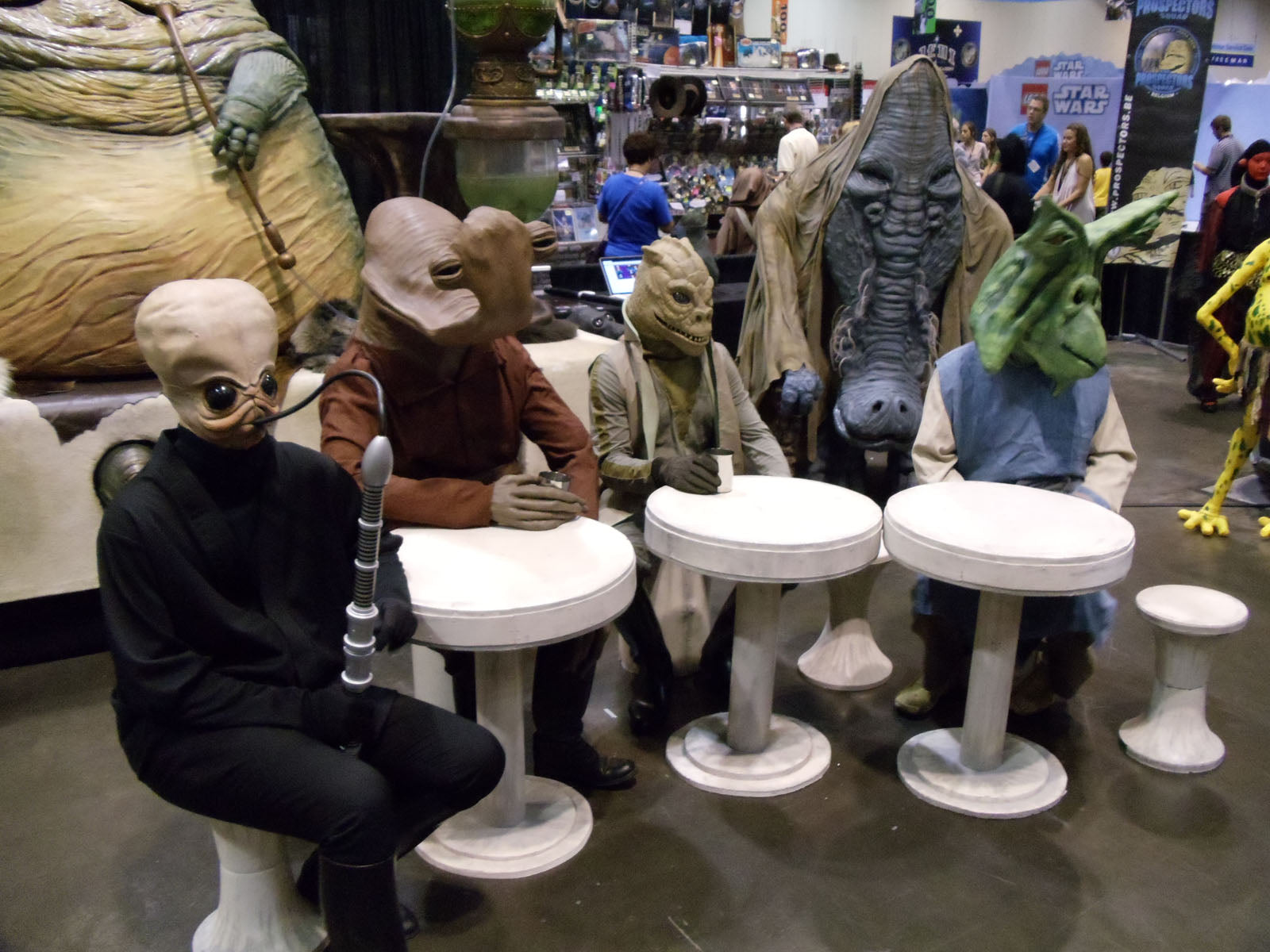
Image via Wikimedia
The main reason the deal happened was because an executive at 20th Century Fox liked American Graffiti, and wanted to placate Lucas until his next mainstream hit, that he forced a production and distribution deal.
Of course, Star Wars immediately broke box office records, even with a fairly limited initial release of roughly 40 theaters. Within a year, it would go on to be the highest grossing film of all time.
But it wasn’t just record breaking ticket sales that made Lucas a creative and entrepreneurial pioneer. He paved the way for future strategies in licensed content, co-marketing and merchandising. In addition, he inspired and supported other filmmakers to champion ideas that were bigger than anything Hollywood had seen before.
Merchandising vs. Up-Front Money
Before starting filming on Star Wars, Lucas was offered the opportunity to renegotiate for a higher writing and directing fee than the $150,000 that had originally been agreed upon (roughly $600,000 in today’s dollars).
But he declined. Instead, he went for the advantage in other parts of the contract with Fox, focusing on getting ownership of the licensing and merchandising rights, and contractual arrangements for any sequels. Fox wasn’t concerned, if anything they saw it as foolish move by an unproven filmmaker, as their attempts at merchandising the original Dr. Dolittle had failed miserably, so they happily signed them away.
I've always been an outsider to Hollywood types. They think I do weirdo films.
His faith in his vision has paid off a hundredfold in the years since. Not only did he gain the merchandising rights, but he also used them wisely, and as a result, earned hundreds of millions of dollars from licensed games, toys, and collectibles.
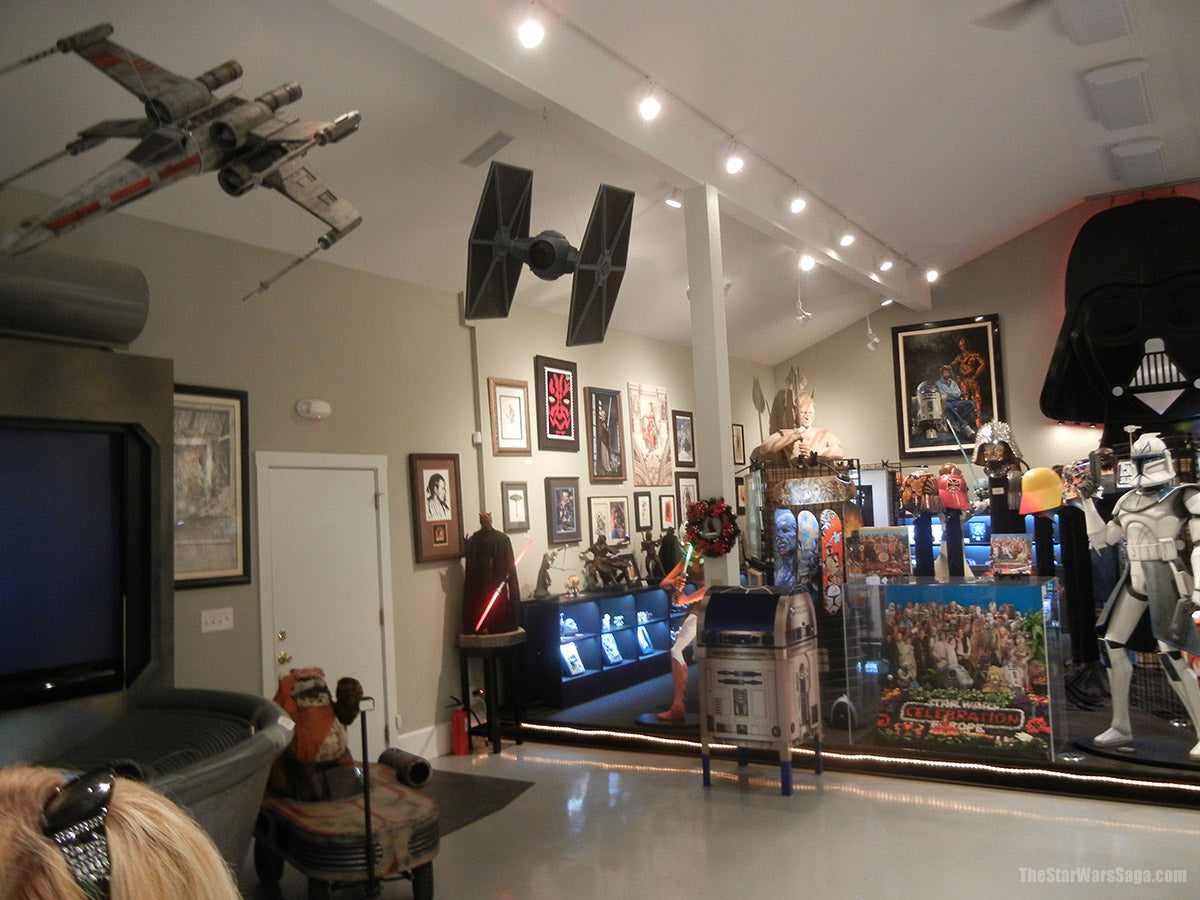
Image via TheStarWarsSaga.com
As of 2012, the film had sold roughly $20 billion worth of merchandise. Lucas’s merchandising success left film companies everywhere taking notes. In essence, Lucas was the godfather of great film merchandising and later inspired toy manufacturers to develop TV shows around their products (think My Little Pony).
Making Science Fiction Cool (Or At Least Profitable)
After Star Wars, Lucas was exhausted from all the hands on work that came with directing a movie, however he (and the merchandising opportunities) demanded that more of the Star Wars story be told.
He used the revenue generated from the first Star Wars, to become the executive producer (the one who distributes the film, and therefore gets a bigger share of the profit) and and brought on Irvin Kershner to direct “The Empire Strikes Back” and Richard Marquand for “Return of the Jedi.”
Taking a more broad strokes approach to his work, Lucas consulted on the stories for the Star Wars sequels, and started working on the story for another idea for a franchise about an adventure seeking archeologist, known as Indiana Jones. He served as producer for Indiana Jones, while encouraging his friend Steven Spielberg to direct this adventure.
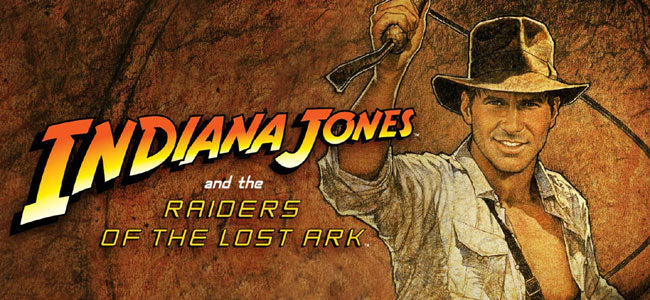
Lucas also founded Industrial Light and Magic in 1975 as a division of Lucasfilm. Industrial Light and Magic set the industry standard for special effects in the 1980s (and is still an industry leader). The company has worked on other pop-culturally signficantly films ranging from Star Trek II, The Dark Crystal, Labyrinth (along with other Henson films) to film franchises like Back to the Future, Indiana Jones, and Jurassic Park.
All of these pop culture titans have Lucas’s thumbprint on them through ILM.
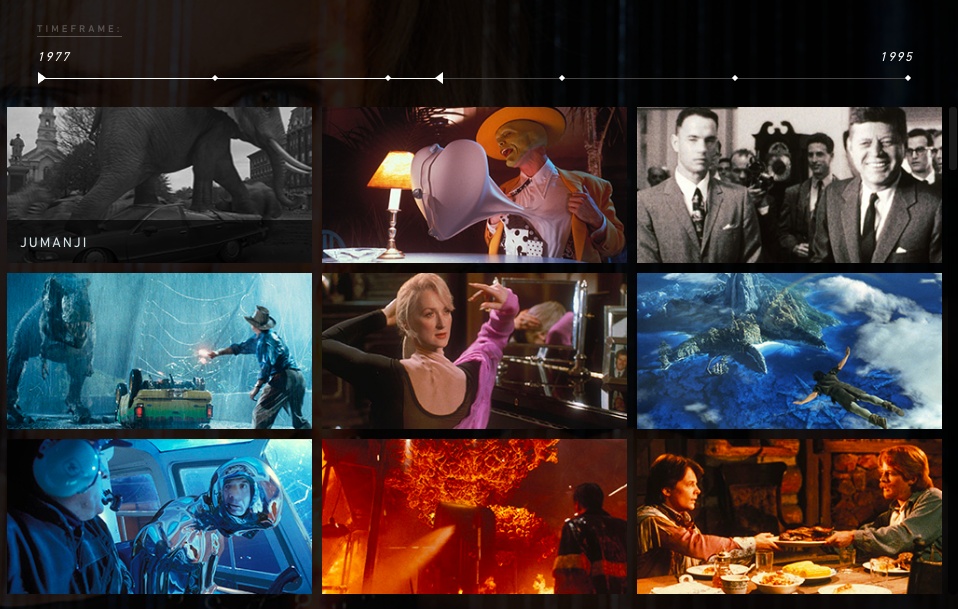
Image via Industrial Light & Magic Archives
While Star Wars usually gets the credit, it was the man, George Lucas, who showed Hollywood exactly how profitable big, effects driven, fantasy adventures could be.
Whether it’s cool to be a nerd or not still depends on who you ask, but Star Wars definitely made being a nerd more mainstream. Without its cultural impact, we probably wouldn’t be seeing multiple science-fiction and comic-book movies a year — even if it took us a while to get there.
Creating a Ripple Effect That's Spanned Generations
After the incredible success of the first Star Wars movie, Lucas wanted to amp up the special effects in future films. Originally, they were incredibly labor intensive, with perfect hand-made models, puppets, stop motion animation, and other tricks used to create the groundbreaking special effects in A New Hope.
With that in mind, he recruited Ed Catmull fresh out of college to head Lucasfilm’s newly created computer division in 1979. He continued to grow the department, and a few years later, in 1986, Steve Jobs purchased the entire computer graphics division at Lucasfilm. His aim was to spin it off into its own company — a little place called Pixar.
In other words, Pixar might not exist without George Lucas. Neither would the multitude of award-winning films they’ve created, ranging from Toy Story to Finding Nemo, and their cultural impact. Or the multitude of managers that have been inspired by Pixar’s company culture (which is not only the subject of countless articles, but also a New York Times bestselling book by Ed Catmull).
Inspiring Technology
We’ve discussed the symbiotic relationship between science fiction and the evolution of technology before, and it holds true here, too. Star Wars probably isn’t the only inspiration for the military to develop laser weapons that can shoot down aircraft, but it’s hard not to draw some parallels.
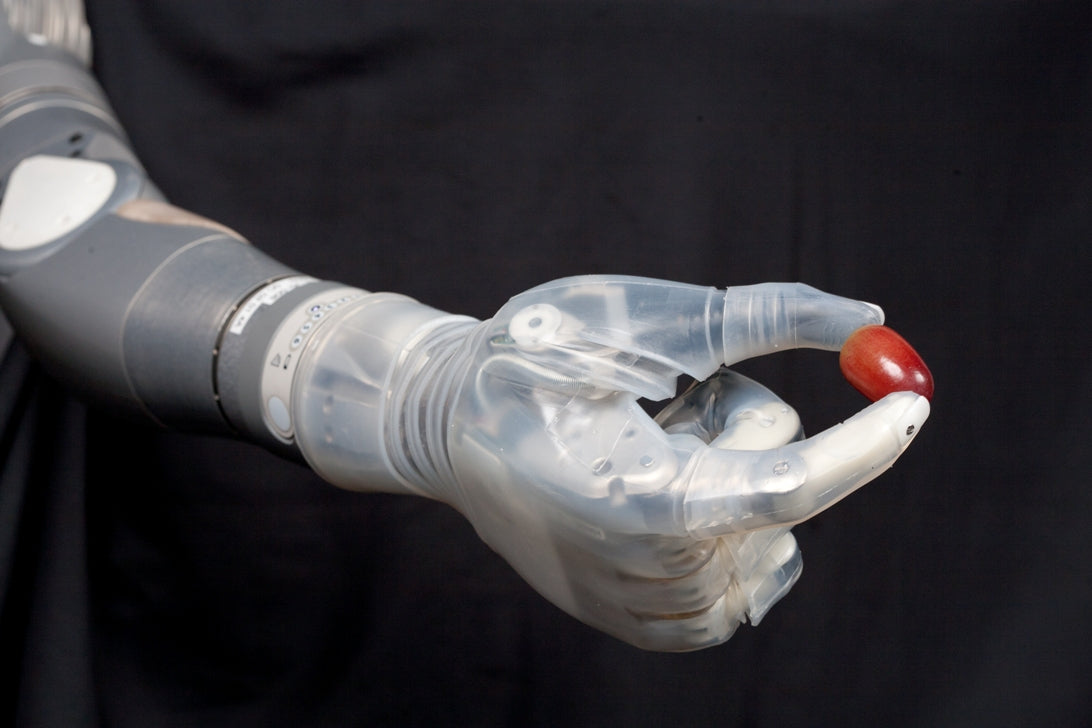
The DEKA arm, a project sponsored by the Defense Advanced Research Projects Agency and the U.S. Army Research Office, is affectionately referred to as the Luke hand. And soon, Star Wars-themed prosthetics will be available for children, too — again, the technology isn’t directly inspired by the film, but anything that helps kids feel better about their prosthetics is an A+ in my book. And while we’re still working on lightsabers (which probably won’t ever be doable, but we can dream), the US Military is also funding research into hoverbikes.
The Force is Strong in This One
The main thing that’s helped Lucas throughout his career, and created a bigger impact than he would have had otherwise, is his unwavering faith in his vision. If he hadn’t been so sure Star Wars would be a success, it’s likely he wouldn’t have fought for merchandising rights.
Without the money from merchandising and licensing, he wouldn’t have had as much money to pour into Lucasfilm and associated projects. Because of that, Pixar wouldn’t exist. And the chain reaction continues.
But it wasn’t just his faith in his vision — Lucas was also an expert in his craft. He’d been working on films for more than ten years by the time Star Wars debuted, immersing himself in other stories and working alongside the best mentors he could find. Whether he absorbed their wisdom in person or through a book, exposure to the greats showed in his work.
Really, the lesson we can learn from Star Wars and Lucas himself is: learn from the best, put their lessons to work, and stay the course when you know you’ve created something great.
Read more
- Ecommerce Sales Tax: A Guide to Economic Nexus & Ecommerce
- Living the Dream? How Successful Shopify Plus Merchants Relax & Unwind
- Ecommerce Funding to Scale and Grow (Without Giving Up Part of Your Business)
- Wholesale Ecommerce: What is It and How to Start?
- Ultimate Flash Sale Ecommerce Guide: How to Sell Over $3 Billion on Autopilot
- Shopify Migration | Transfer Your Store or Website to Shopify
- The Top 6 Benefits of Headless Commerce
- Composable Commerce: What It Means and if It’s Right for Your Business


